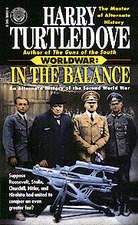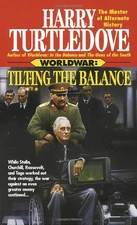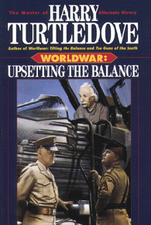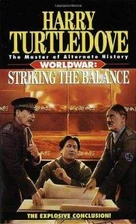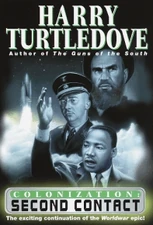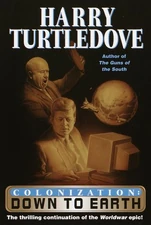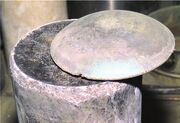
Plutonium is an artificially occurring element, number 94 on the Periodic Table. It was first synthesized in 1940. Trace amounts of plutonium were subsequently discovered in nature. Discovery of plutonium became a classified part of the Manhattan Project to develop an atomic bomb during World War II. The first nuclear test bomb, "Trinity" (July 1945), and the second atomic bomb used to destroy a city (Nagasaki, Japan, in August 1945), "Fat Man", both had cores of plutonium-239.
Plutonium in Southern Victory[]
The element known as "plutonium" in the United States was named "jovium" by Confederate physicist Henderson V. FitzBelmont during the Second Great War. Three of the Confederate States' leading experts in jovium extraction, Dean, Martin, and Collins, were all killed by a United States air strike on Washington University in 1943, and the fourth, Delancey, was badly wounded.
In the spring of 1944, Clarence Potter and a group of Confederate operatives with perfect U.S. accents transported a jovium-bomb, made with assistance from Britain, to the west side of Philadelphia. The bomb went off and destroyed part of the city, prompting quick U.S. atomic reprisals on the C.S. ports of Newport News and Charleston. After the war, Potter was put on trial for his use of U.S. uniforms in aiding his attack on Philadelphia, but was found not guilty.
In Great Britain, this element was named "churchillium", in honor of Prime Minister Winston Churchill.
Plutonium in Worldwar[]
Early in the Race Invasion of Tosev 3, a sample of plutonium was captured from a destroyed Race starship in a joint venture by the SS and the NKVD commanded by Otto Skorzeny. Germany and the Soviet Union divided the plutonium equally, but since the raid occurred within Soviet territory only the Soviet plutonium reached its intended destination; the German sample was once again divided in half when Heinrich Jäger was captured by Mordechai Anielewicz while carrying it across Poland. He was allowed to carry half of his sample to Germany; the other half was sent to the United States on a British submarine where it was eventually carried to Denver by General Leslie Groves.
After realizing that his Japanese captors were familiar with the periodic table, Teerts once tried to confuse them by referring to plutonium, which does not occur naturally. To his horror, they were familiar with it as well, and he realized he had inadvertently betrayed one of the Race's atomic secrets.
When enrichment of Uranium proved difficult, humans began to use plutonium in the construction of their atomic bombs.
| |||||||||||||||||||||||||











